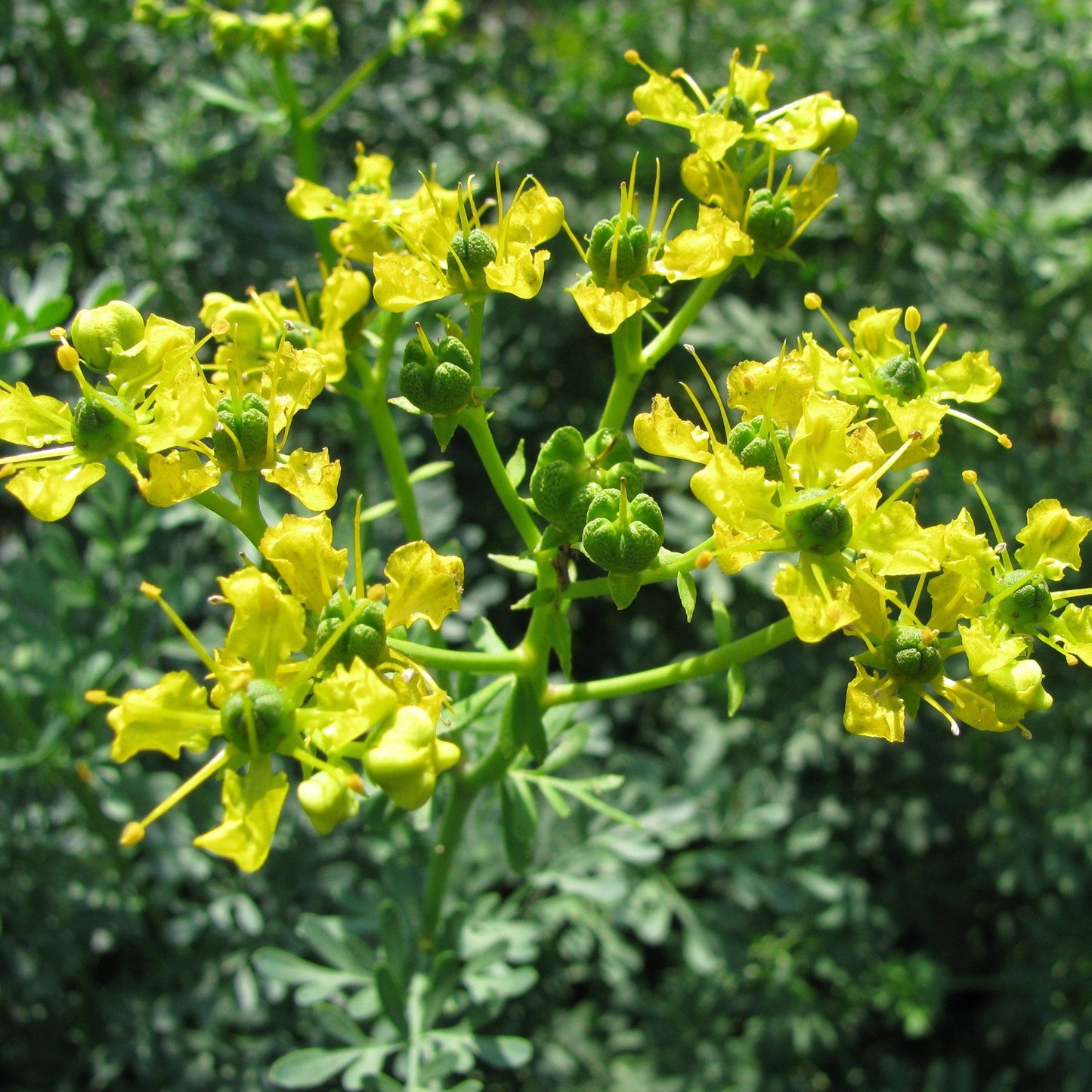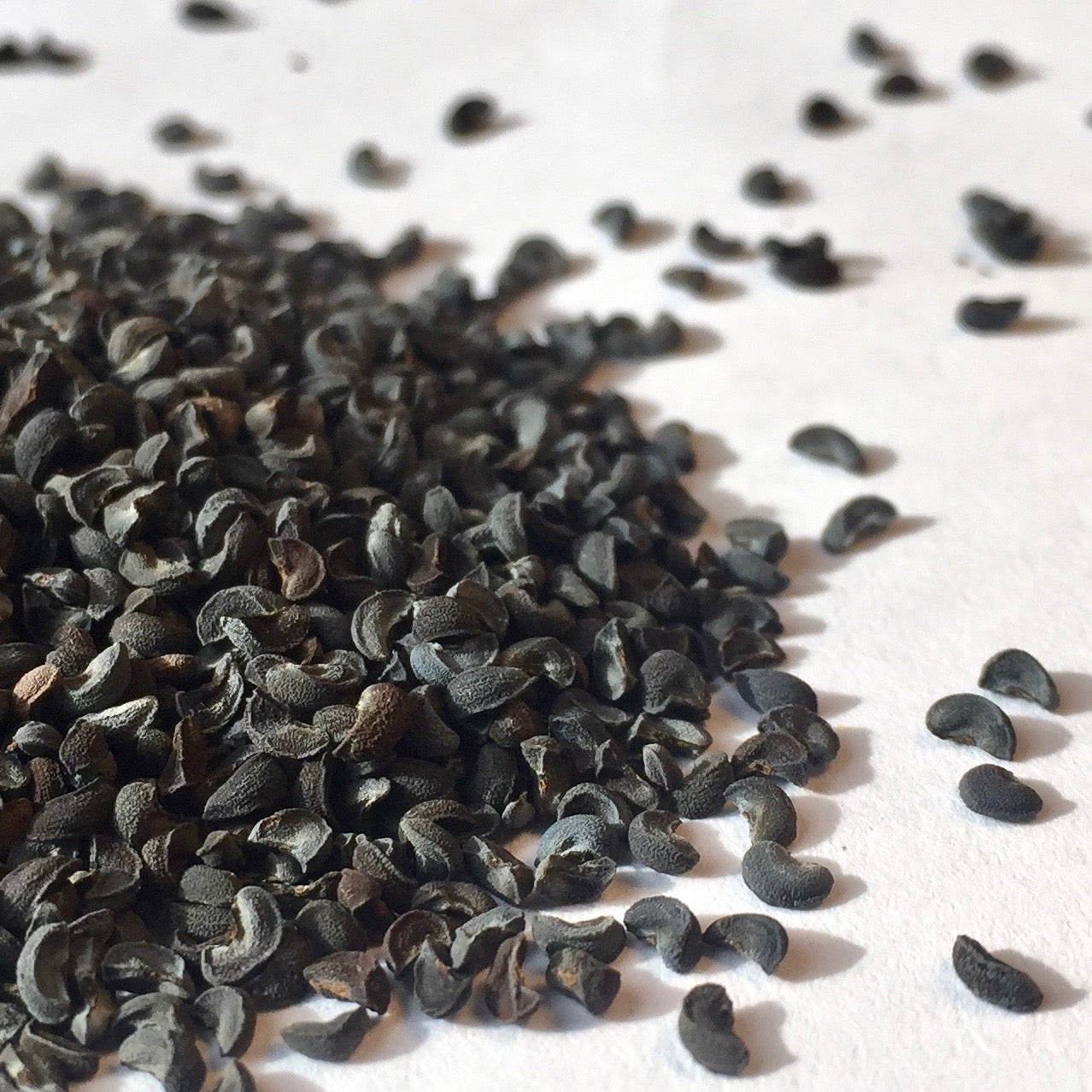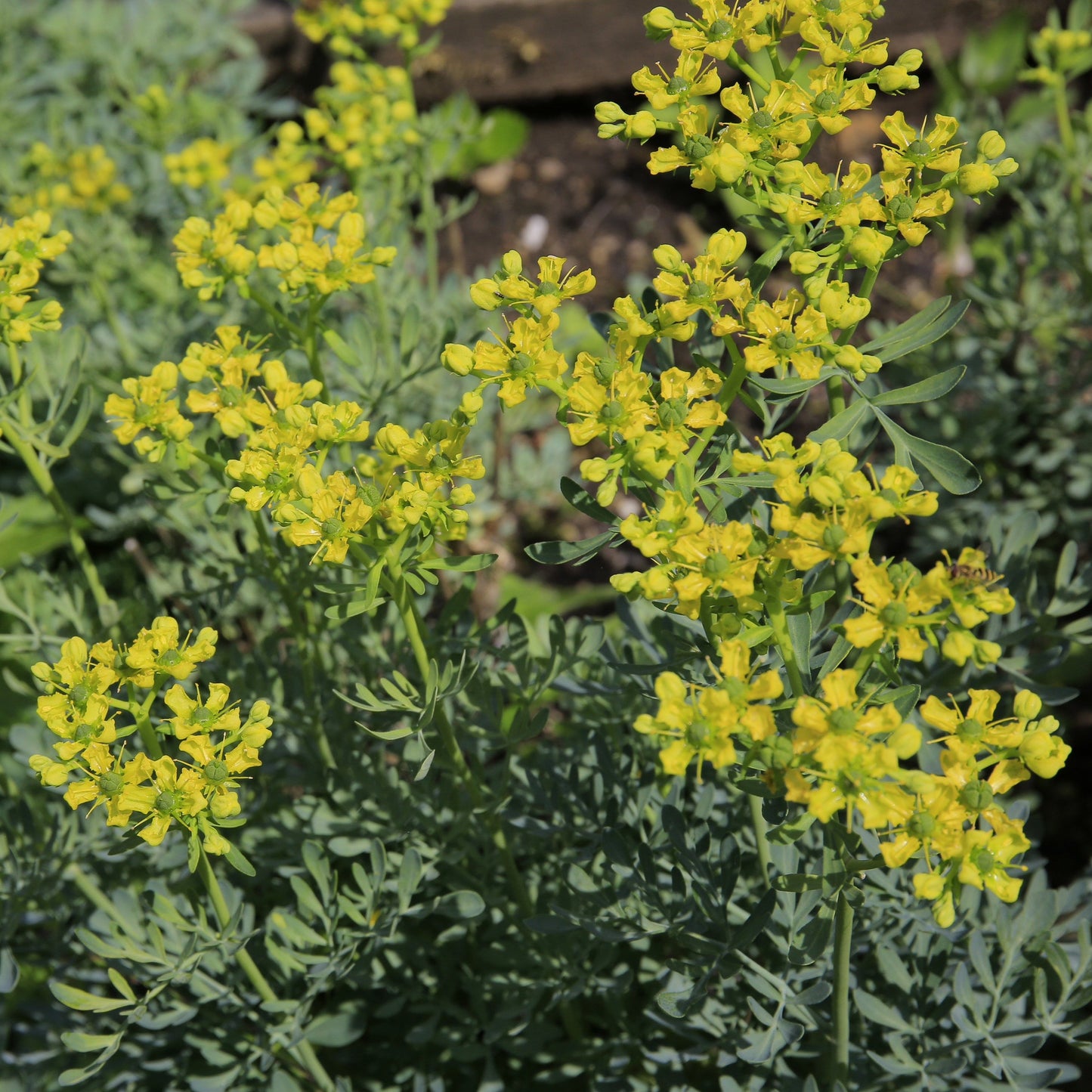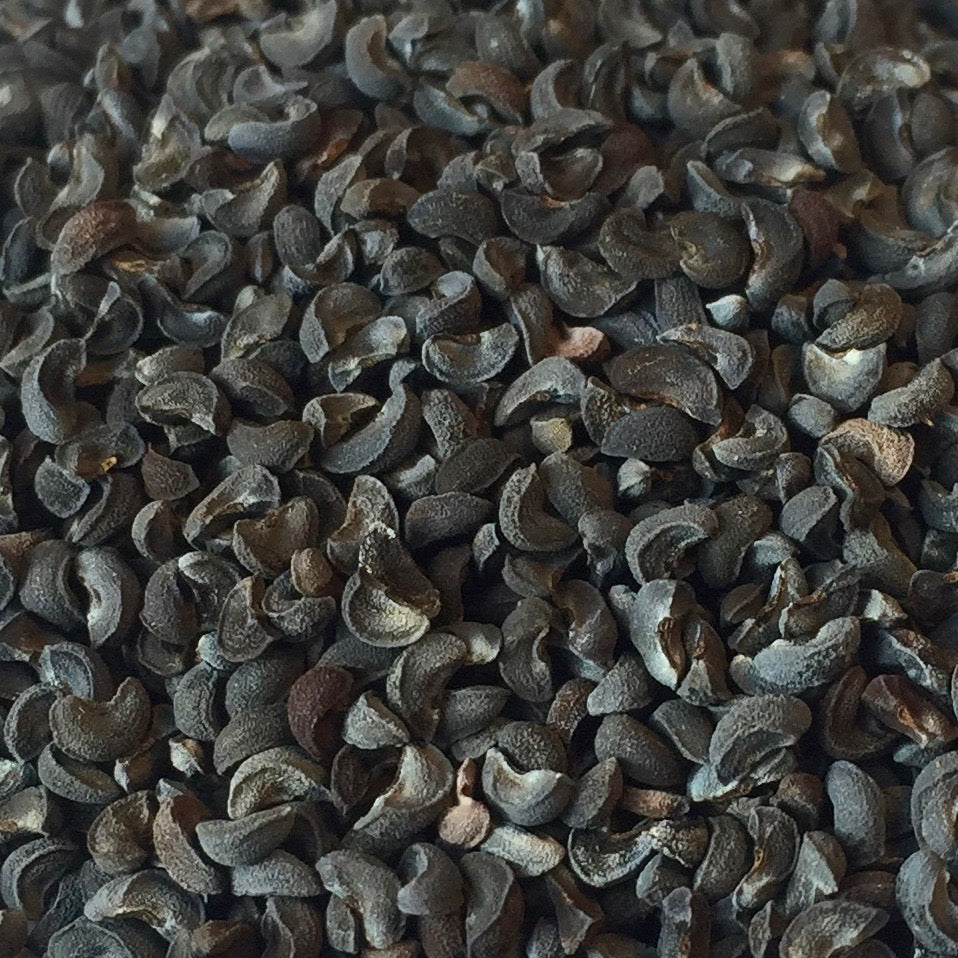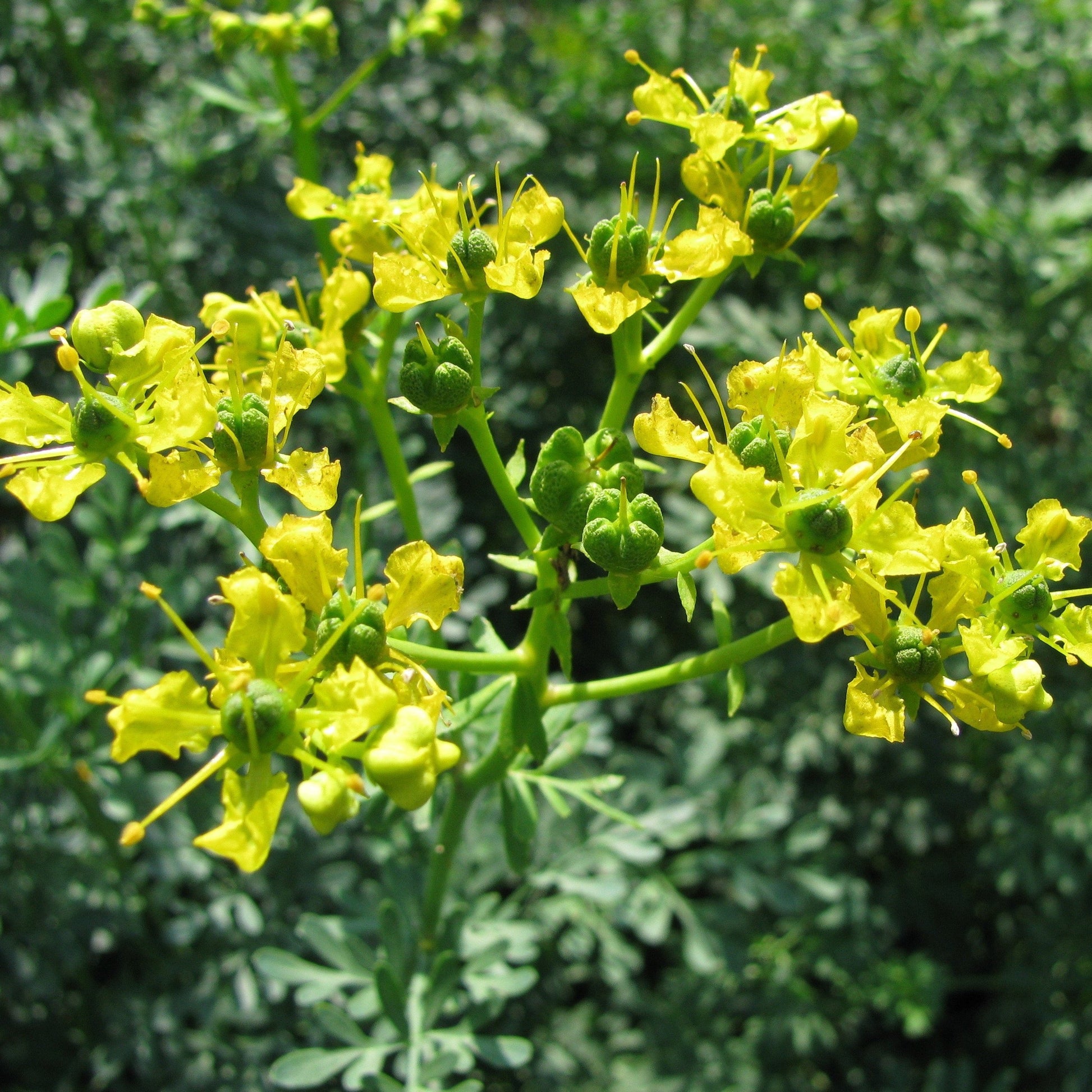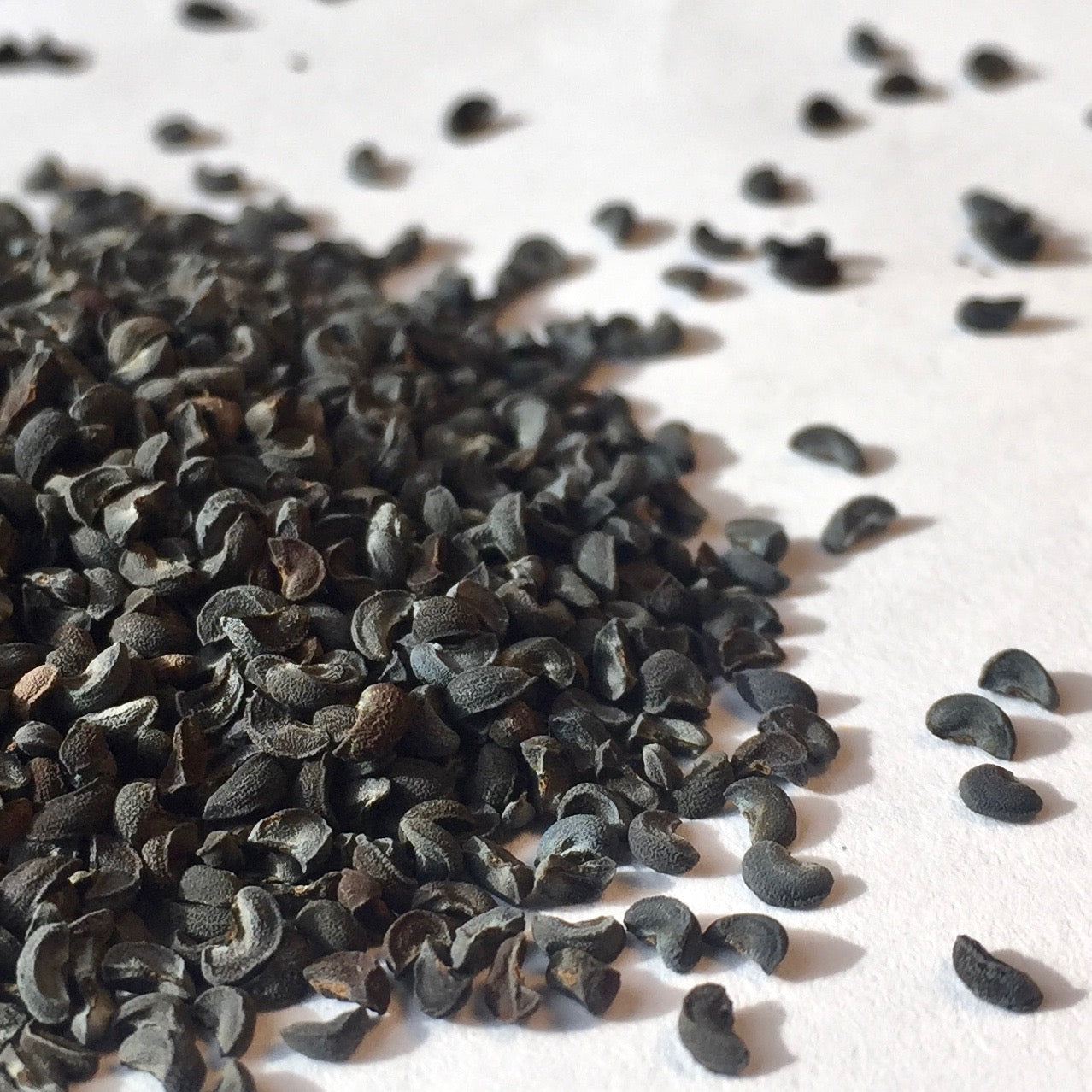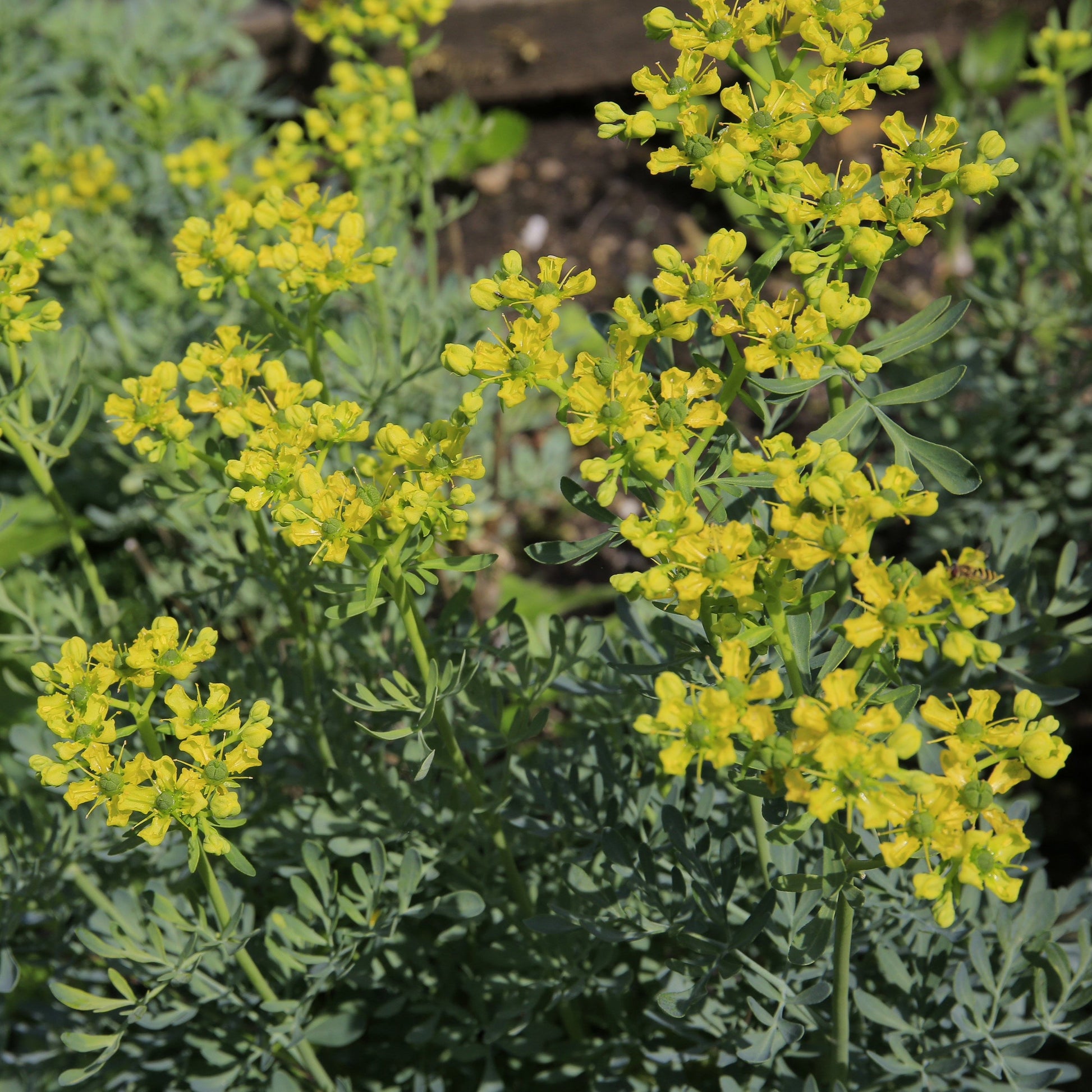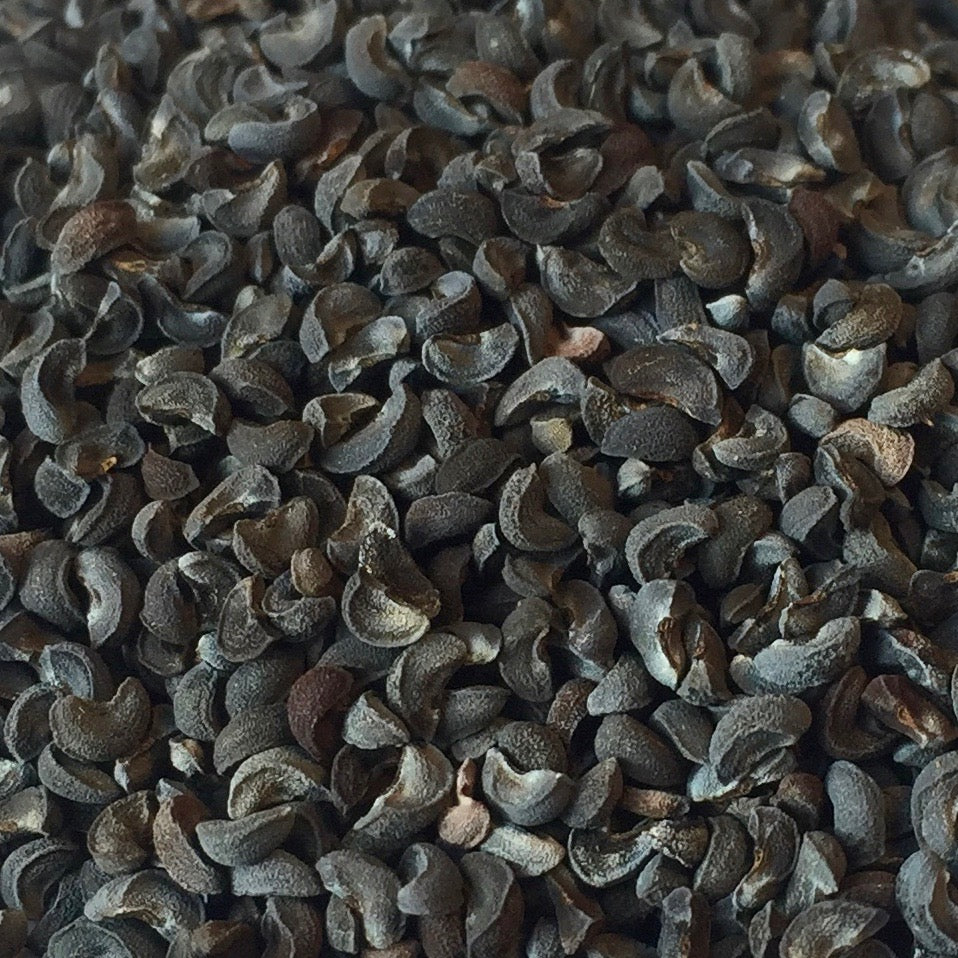Rue (Ruta graveolens)
List Price: $4.00
Couldn't load pickup availability
Once a common staple in most herb gardens, the unassuming Ruta graveolens has fallen out of the vernacular— even more of a reason to grow this wonderful plant. Its pungent scent is a good repellent against pest insects, especially Japanese beetles, making rue a good companion plant. It is traditionally used in Central Asia as an insect repellent and room deodorizer. And, its flowers are attractive nectar sources for Swallowtail butterflies and parasitic wasps, with its leaves being good fodder for caterpillars too. One should take care in handling Rue plants, as their sap can be a skin irritant and cause blisters. While a perennial plant, Rue does not have a long life span, and can easily be allowed to propagate itself by letting flowers go to seed. Ruta graveolens makes for a lovely low hedge in one’s garden.
Known widely as ‘Herb-of-Grace,’ this Balkan-originating herb has a far-reaching culinary history; it is important to note that Rue is only safe to consume in small quantities, usually as a flavoring. This common name is derived from the Catholic practice of dipping branches of Ruta graveolens into holy water and sprinkling it over the heads of parishioners as a blessing. In various Mediterranean cultures, this plant was once popular as an herb in food or drink, and remains a key ingredient of the Ethiopian/Eritrean spice blend berbere. In Ethiopia, it is also often dipped into one’s cup of coffee. This plant carries a potent symbolism, with ‘rue’ now known as synonymous with ‘regret.’ This is on account of its bitter flavor. Folklore indicates Rue as an herb to keep witches away, and has a strong association with protective magic. The genus ‘Ruta’ comes from Greek for ‘set free,’ a naming that references Greek and Roman use of this plant as an antidote for poison. Michelangelo and Leonardo da Vinci allegedly used rue to improve the clarity of their vision. It also had use as a strewing herb, with fresh springs being scattered on floors as a means of keeping away plague. This plant, with its rich history in human culture, appears everywhere from the Bible to Shakespeare to folk songs throughout Europe.
